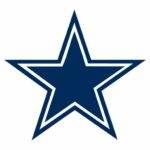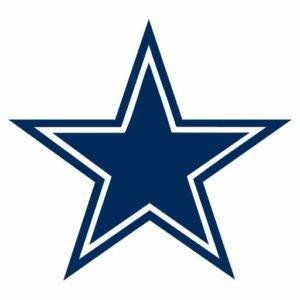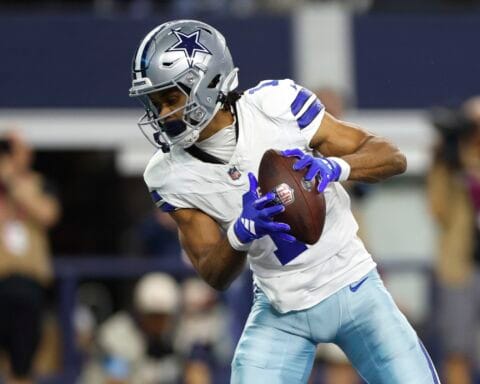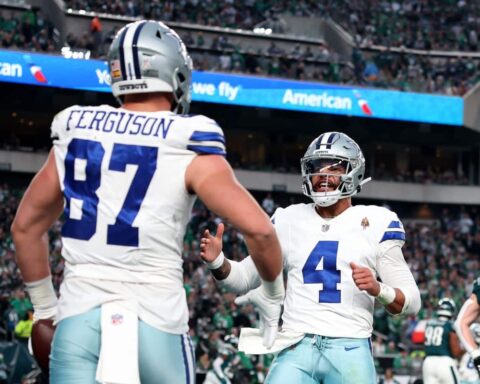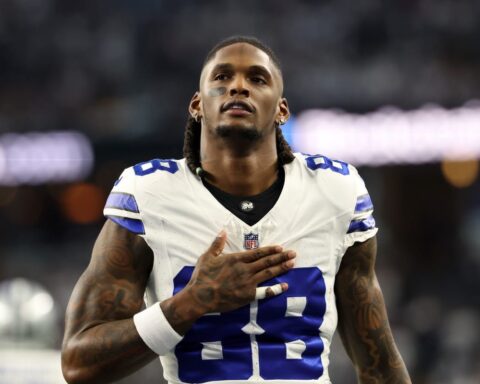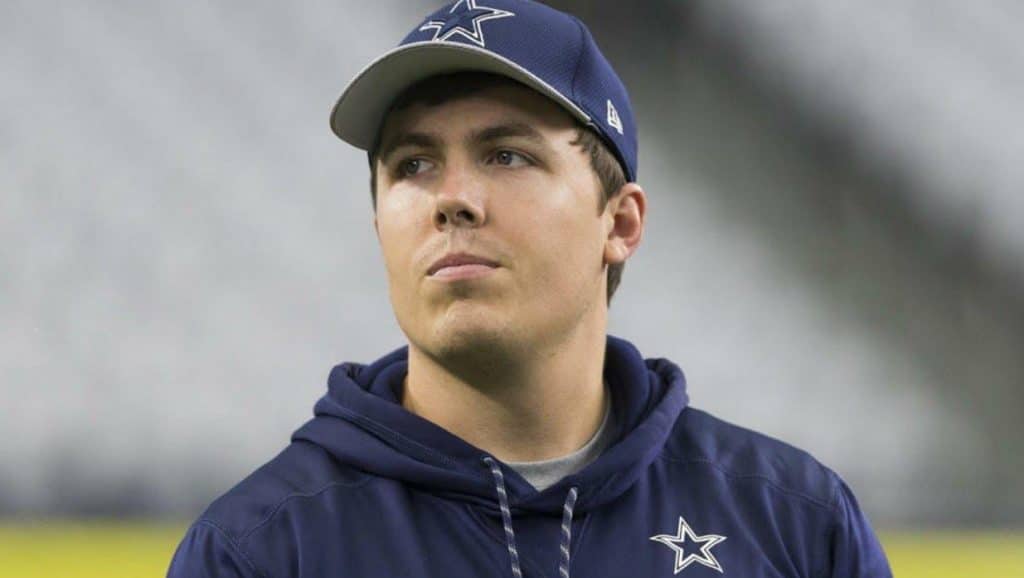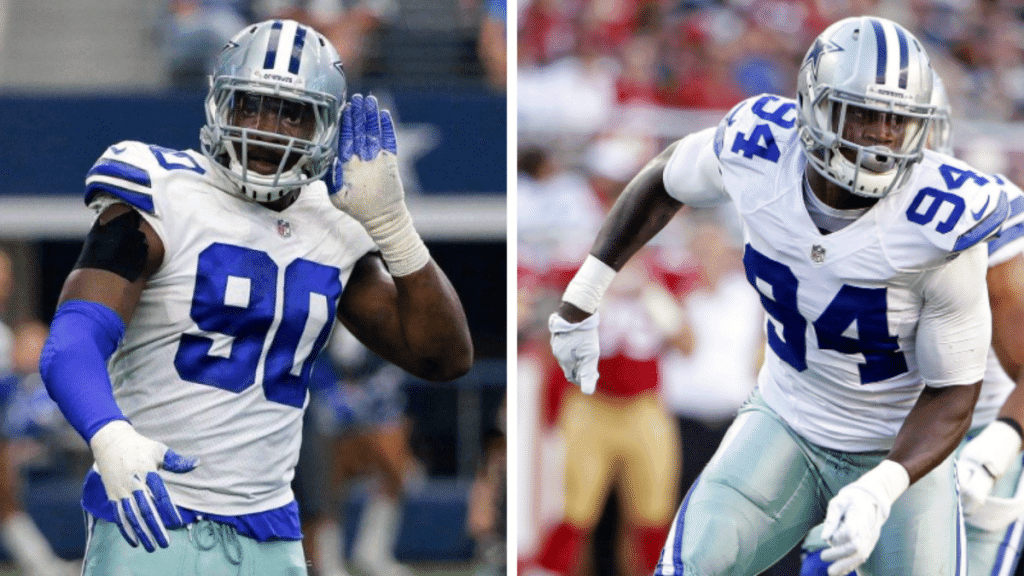Ask Cowboys fans what they’re most looking forward to in 2021 and a good number will say watching CeeDee Lamb’s progress in his second season. But while the young WR is facing heavy expectations, he’s still enjoying the luxury of being just one piece in a loaded Dallas offense. This upcoming year should be an easier road for Lamb than some of the previous wearers of that #88 jersey.
Being a 1st-Round pick sets the bar high for every player entering the NFL and CeeDee was no exception. It’s especially intensified when everyone calls you a “steal” and compares you to some of the greatest WR prospects to come out of college in recent history.
Unlike most who carry that burden, though, Lamb was able to join a depth chart that already had Amari Cooper and Michael Gallup coming off 1,000-yard seasons in 2019. Though CeeDee did get plenty of balls thrown his way as a rookie, finishing second on the team in targets, he didn’t face the responsibility of being the number-one receiver or being relied on to make the offense function.
Lamb was a luxury in 2020 and remains that this year. Dallas could still have a potent offense with a free agent like Randall Cobb in 2019 or perhaps even Cedrick Wilson handling WR3 duties. But CeeDee’s presence is one reason that the Cowboys were on a record-setting pace for total offense in 2020 before Dak Prescott’s injury and hopefully will resume that course now.
Indeed, Lamb has a golden opportunity in his second season; a chance to produce in a potent offense with continuity at quarterback and in the coaching staff. It’s a far better one than the previous members of the #88 Club have enjoyed.
2011 – Dez Bryant
Dez Bryant’s rookie season in 2010 was similar to CeeDee’s. He came in with Miles Austin and Jason Witten still performing at their peaks and Roy Williams as a veteran, albeit inconsistent, as part of the WR group. He got plenty of opportunities in that offense but wasn’t leaned on as heavily as many 1st-round receivers would’ve been.
Bryant’s second year was Jason Garrett’s first as Cowboys full-time head coach. The former offensive coordinator had taken over midway through 2010 when Wade Phillips was fired, but 2011 was his first offseason in the big chair. It was also Tony Romo’s return from a major injury in 2010 that had cost him 10 games.
With Miles Austin missing six games and parts of others that year, Dez had to step into the lead role among the wide receivers. Witten was still the top target on offense but Bryant was the WR that had to keep defenses honest.
It was a year of transition for Dallas, moving fully into the Jason Garrett Era for the first full season. And for Dez Bryant, it was first year having to do the heavy-lifting as the team’s number-one wide receiver.
2003 – Antonio Bryant
We don’t often mention the other Bryant when we talk about the #88 legacy, but he was given that number in 2002 for the same reasons that Dez and CeeDee got it when they joined the Cowboys. And for at least his first year, A.B. looked like he just might deliver on that expectation.
After a strong rookie season despite the Cowboys’ poor 5-11 finish, Antonio went from being a starter to the third receiver after new head coach Bill Parcells traded for Terry Glenn. This would also be Sean Payton’s first year as offensive coordinator in the major changes that Parcells brought to Dallas.
2003 was actually a great year for the Cowboys overall; a return to the playoffs and the first positive season the team had had since the decay of the 90s dynasty. But Antonio Bryant didn’t get to grow along with the team, taking a backwards step in his career development.
Frustration over that reduced role, and personality clashes with Parcells, eventually led to Bryant being traded midway through the 2004 season. But the road to that unfortunate end started in 2003 as the promising rookie became a lesser part of offense.
1989 – Michael Irvin
Irvin joined Dallas for Tom Landry’s final season as head coach in 1988. With the organization in freefall, Michael was one of many young players who likely welcomed the arrival of Jerry Jones and his college coach Jimmy Johnson in arguably the most important offseason in team history.
Along with the new owner and coach in 1989 came a new quarterback, 1st-overall pick Troy Aikman. And as most Cowboys fans know very well, Troy’s first season was a rough one even by typical rookie QB standards.
It wasn’t a kind year for The Playmaker either. Fully-established now as the team’s top wideout, Irvin missed 10 games due to injury and that absence contributed to Aikman’s woes. But the Cowboys still needed a lot of work to be a competitive team, going just 1-15 in one of their worst years of all time.
Thankfully, we know how things went from there. But it took a while for Michael Irvin to become the perennial Pro Bowler and legendary Cowboy that we all consider him to be today.
~ ~ ~
Clearly, CeeDee Lamb has it easier in his second season than these guys did. He isn’t facing the same level of responsibility as Dez Bryant or Michael Irvin or the massive transitions that Antonio Bryant went through. He gets the same coach and coordinator in 2021, plus a quarterback who far exceeds what a rookie Troy Aikman or any version of Quincy Carter had to offer.
While being in such a loaded offense could limit Lamb’s personal production, it also could be an an environment which allows multiple stars to shine. If Dak Prescott can get back to that torrid 6,000-yard pace from 2020 then there will be more than enough stats to go around for most of his receiving targets.
Yes, the Dallas Cowboys got a gift when CeeDee Lamb fell to them in the 2020 NFL Draft. But clearly, Lamb is also a beneficiary of where he landed. Circumstances are set up nicely for him, and better than the last several #88s, to continue blossoming in his second year.
